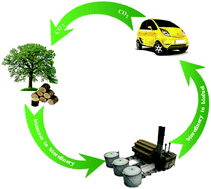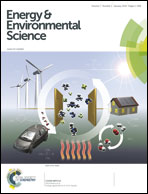Upgrading of lignin-derived bio-oils by catalytic hydrodeoxygenation
Abstract
The incentive for use of renewable resources to replace fossil sources is motivating extensive research on new and alternative fuels derived from biomass. Bio-oils derived from cellulosic biomass offer the prospect of becoming a major feedstock for production of fuels and chemicals, and lignin is a plentiful, underutilized component of cellulosic biomass. Lignin conversion requires depolymerization and removal of oxygen. Likely processes for lignin conversion involve depolymerization (e.g., by pyrolysis) and catalytic upgrading of the resultant bio-oils. A major goal of the upgrading is catalytic hydrodeoxygenation (HDO), which involves reactions with hydrogen that produce hydrocarbons and water. The aim of this review is to present a critical introduction to HDO chemistry focused on compounds derived from lignin, including a summary of HDO reactions and those that accompany them, with a comparison of catalysts addressing their activities, selectivities, and stabilities. The reactions are evaluated in terms of reaction pathways of compounds representative of lignin-derived bio-oils, including anisole, guaiacol, and phenol. The review includes recommendations for further research and an attempt to place HDO in a context of options for renewable fuels and chemicals, but it does not provide an economic assessment.


 Please wait while we load your content...
Please wait while we load your content...